Streaming Needs a Strong Dash of Social Involvement

Lots of folks like to say that Netflix and the other streamers broke up screen-based entertainment (movies and TV), but they didn’t really. They just rode the coattails of YouTube and social media.
Video social media gave younger generations an opportunity to express themselves as well as entertain themselves and anyone else who wanted to click in.
So why should streamers and studios pay any attention to what social media is doing since they are creative giants?
They want to attract and retain the same kids/folks who have grown up with smartphones and social media that are delivering finely tuned experiences that are social, interactive, immersive.
While it’s true that streaming services may have disrupted TV/movies and its business models, but they still do things pretty much as they did 15 years ago when Netflix streamed its first subscription movies.
You know … here are the movies/shows, pick the ones you want to watch and pay us a monthly fee.
We regularly use YouTube, Instagram, or Snapchat to learn more about an upcoming film – trailers, outtakes, behind the scene stuff; and we can pretty much expect that our next click will bring up more about the project or similar movies we might be interested in.
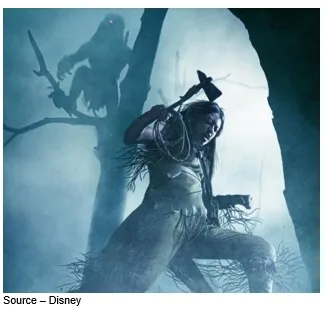
Take when we first got interested in Prey.
Disney’s 20th Century Studio and Hulu made full use of social media/video when they rolled out the film.
They had several great trailers and featurettes on YouTube that really whetted your appetite to see the project.
Capitalizing on the fact that the studio made it a point to let you know it wasn’t just a Predator prequel, but the film was about the people who roamed North America 300 years in the past.
The marketing build-up was not just intriguing, it was also subtly educational and extremely inclusive.
Social media was heavily leveraged to let you know that Native Americans throughout the project – writing, producing, directing, camera/crew and actors; included authentic language plus English and other language subtitles and that it was as true to the Comanche history/way of life as possible.
We liked the first Predator movie, and all of the social media content gave every indication that the prequel would deliver even more … it didn’t disappoint.
That’s what they’re designed to do, deliver finely tuned, personalized feeds of images, video, news, other stuff and all for free once you get past the periodic ads that folks hope will interest, engage and hopefully encourage you to buy something.
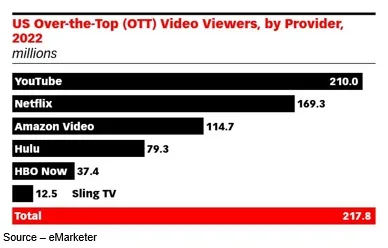
Yes, watching series and movies at home remains the top entertainment choice–except for the younger generation.
Chasing content across the growing number of streaming services takes more “valuable” time than Gen Zers
want to spend and then when they find it, they still have to pay to watch it.
Why?
User-generated content—which is usually short-form and easily consumable—is easier to find and watch because of the algorithmically fueled social media services.
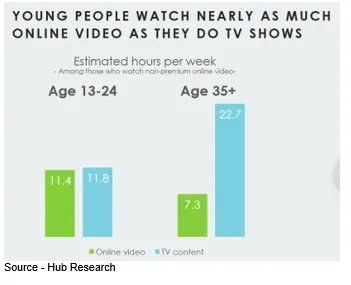
YouTube’s and the other social video sites draw on the tremendous volume of user data that is accumulated to continuously refine themselves so that they continuously offer up compelling and engaging content (and yes, ads).
According to Hub Research, 51 percent the streaming public say they spend more time watching user-generated video content than video streaming series and movies.
Many note that they do it without any frustrating searching for content they find of interest because the content – and other stuff – comes to them.
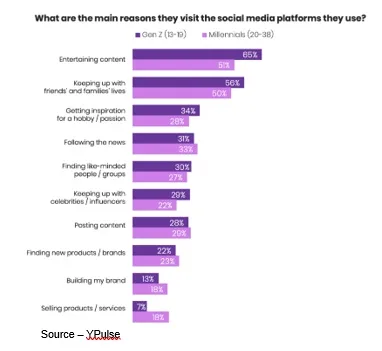
Social media is more than just a gateway though to the Gen Z’s online global connection and is considerably different than FAST (free ad-supported streaming TV) such as Roku.
The more personal data people provide and the more they use it, the better it becomes at serving up the content folks want and the longer they will view the video material.
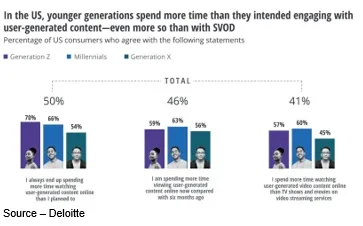
More than 80 percent of Gen Zers report that they connect with their services several times a day because it helps them stay updated on news, current events and video stories.
There’s a variety of different types of social media video and different categories.
Social media video, especially user generated content, is often viewed as a time filler, something to keep you interested and involved in between your other entertainment activities.

The in-depth library of video content from around the world. YouTube has more than 500 hours of video content uploaded every minute, more than 2B users log in monthly and more than 2B videos viewed daily – and constantly refined viewing algorithms encourage folks to spend more time watching user and professional video than they had planned.
Deloitte found that 70 percent of Gen Zs have trouble pulling themselves away.
Short-form, user generated videos get the greatest attention and viewers, but it isn’t easy.
While it’s true that some social media video producers/posters earn upward of $1M annually, they have to continually update, refresh content to keep people interested and coming back for more.
It’s not an easy gig and has to constantly evolve to ensure the content gets put in front of the users because they have choices … lots of choices.

To keep people connected to their services, social media/video services use social algorithms that are fine-tuned to users’ preferences and behaviors which enable them to match the right content with the right audience.
For the social media/video service and the content creators, it’s all about keeping people engaged with their retention ability and keeping folks engaged as long as possible.
Although households have increased their use of “Smart TVs,” doubling the amount of time spent watching YouTube and other social video services, most of the content is viewed on smart phones.
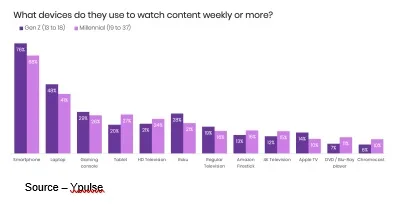
That really shouldn’t come as a surprise to anyone–especially if you have kids, because the devices are seldom far from them–even when they’re sleeping.
Cisco recently reported that online videos make up more than 82 per cent of all consumer internet traffic and mobile video consumes more than 30 percent of that capacity.
In China and APAC, where mobile devices are people’s all-inclusive communications, computing, entertainment device, mobile video streaming is as much a 70 percent.
Most VOD services now view social video as major coopetition (cooperative competition).
Back in 2017, Netflix Reed Hastings said his organization’s biggest competition was sleep.
A year later, when the company entered the Indian entertainment market, he found that social media video services were even more aggressive competitors because they were free.
While social video is a competitor for more people’s time–especially with the Gen Z folks who account for 26 percent of the world’s population, they are also valuable services for them to promote their movies and shows.
That’s probably why every studio and SVOD service has a channel or strong presence on YouTube as well as TikTok, Instagram, Snapchat and other social video services.
It’s a solid way to reach the folks most likely to go to the movie house in addition to grabbing their smartphone to watch a major number of minutes of online shows/movies.
The big problem is, they’re not very loyal.
Gen Zs think nothing of churning (cancelling a subscription, adding one, dropping, stiring and repeating).
Streaming series and movies at home will continue to be popular for the older crowd (millennials, Gen X, boomers), but Gen Z rates video games as second to simply browsing the internet followed by music, news (in capsule form) and their communities.
The key for streaming video services will be to remain a relevant part of their social conversations, focus on driving trend topics and working with their creators and team members to advance content ideas and interest.
This can be in the form of a continuous stream of project short-form videos and connecting with, assisting and rewarding user-generated material streams built around the services’ shows/movies and sharing this content with others in the social communities.
The two streaming video services that already have a strong and active presence in these areas are Amazon and Apple.
 Both have a healthy range of video, news, music and gaming offerings but Apple has a key component that the others will have difficulty in duplicating … a solid social ecosystem.
Both have a healthy range of video, news, music and gaming offerings but Apple has a key component that the others will have difficulty in duplicating … a solid social ecosystem.
Disney has all of the components; all they need to do is put them to work and focus on tomorrow.
Several of the others that in the process of tearing apart and reassembling their organizations may find it a little difficult and will repeat Barton Fink’s observation, “I’m having a little trouble getting started.”
# # #
Andy Marken – [email protected] – is an author of more than 700 articles on management, marketing, communications, industry trends in media & entertainment, consumer electronics, software and applications. An internationally recognized marketing/communications consultant with a broad range of technical and industry expertise especially in storage, storage management and film/video production fields; he has an extended range of relationships with business, industry trade press, online media and industry analysts/consultants.